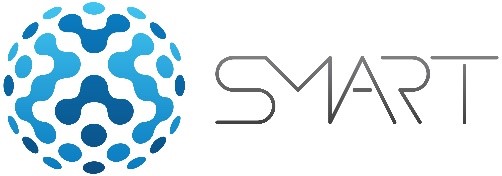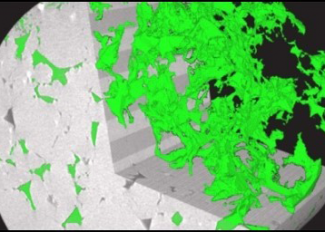Today, the U.S. Department of Energy’s (DOE) Office of Fossil Energy and Carbon Management (FECM) awarded a total of $600,000 to four software developers who won a contest to support FECM’s SMART (Science-informed Machine Learning to Accelerate Real Time Decisions in the Subsurface) Initiative.
 SMART leverages the expertise of seven national laboratories as well as industry partners, universities, field laboratories and carbon storage regional initiatives to advance the understanding of the subsurface environment through machine learning.
SMART leverages the expertise of seven national laboratories as well as industry partners, universities, field laboratories and carbon storage regional initiatives to advance the understanding of the subsurface environment through machine learning.
The four winners in Phase 1 of the SMART Visualization Platform Prize Challenge designed prototype platforms and/or mockups that demonstrate a user-friendly visualization platform. The platform concept is intended to transform how scientists, engineers, regulators and the public interact with subsurface data. The winners will develop the prototypes provided by the SMART Initiative technical team.
Each developer will receive a prize of $150,000 for their efforts in Phase 1 and is eligible to move on to Phase 2 to further refine their prototype. During the next 10 months, the four developers will collaborate with FECM’s technical team through online workshops and webinars to develop a SMART Visualization Platform. The winner chosen at the conclusion of Phase 2 will receive the Grand Prize (worth up to $900,000) and may be granted the opportunity to work on future software development projects for the SMART Initiative.
“We are excited to see our Phase 1 winners move forward and advance their projects while working with the SMART technical team,” said National Energy Technology Laboratory’s (NETL) Grant Bromhal, Ph.D., senior fellow, Geological & Environmental Systems. “This challenge will be a first-of-its-kind tool that will use science-based machine learning and data analytics to visualize key subsurface features to quickly and accurately reveal how the subsurface behaves.”
Phase 1 scoring criteria considered each prototype’s innovativeness, functionality, user friendliness and visual appeal, as well as the contestant’s credentials. Phase 1 submissions selected to advance in the competition are:
- Red Volta Visualization Platform. Submitted by Charles Tanzini and Trevor Nicholson of Raleigh, North Carolina. The developers report that the design and architecture of their platform enables a scalable, multi-user and cross-platform solution. Red Volta’s design allows it to be deployed in standalone mode on a dedicated workstation or as a web application that can be used remotely by operators in the field.
- Subsurface XR. Submitted by Alexander Zimmerman, an American student studying geo-resources and materials engineering in Germany. Subsurface XR will apply state-of-the-art game engine and mixed reality technology to provide users with an app they can run on any device to visualize and intuitively interact with geoscientific datasets and models in 3D.
- GeoDeck. Submitted by PetroLern LLC of Brookhaven, Georgia. GeoDeck is a web-based application. GeoDeck will make the interaction between scientific variables and their spatial and temporal dimensions straightforward and intuitive, using virtual reality (VR) and augmented reality (AR). Developers claim the ultimate immersive experience is only possible by means of VR and AR. The software is designed to accommodate extended reality integration on the web.
- RocVision. Submitted by Illinois Rocstar LLC of Champaign, Illinois. The RocVision subsurface visualization system is an advanced 3D platform for exploring subsurface data. RocVision allows a user to explore 3D spatial and temporal data with methods used by geoscientists. The final RocVision product will support geoscience workflows in subsurface science while providing advanced 3D, 2D and data processing features, using VR and AR.
A thorough understanding of the subsurface is necessary to reduce risks and increase the efficiency of geothermal energy technologies, geological carbon storage and other operations.
These visualization tools will allow non-experts and experts alike to interact directly with subsurface data. The goal is to enhance the analysis, interpretation and communication necessary for decision-making in various subsurface applications. The winning tools should help users answer important subsurface questions about reservoir behavior, reservoir composition, injection patterns, uncertainty in measurements and other critical issues.
FECM funds research and development (R&D) projects to reduce the cost of and decarbonize power generation and industrial sources, and to remove CO2 from the atmosphere to further the sustainable use of the nation’s energy resources. To learn more, visit the FECM website, sign up for FECM news announcements, and visit the NETL website.





 SMART leverages the expertise of seven national laboratories as well as industry partners, universities, field laboratories and carbon storage regional initiatives to advance the understanding of the subsurface environment through machine learning.
SMART leverages the expertise of seven national laboratories as well as industry partners, universities, field laboratories and carbon storage regional initiatives to advance the understanding of the subsurface environment through machine learning.